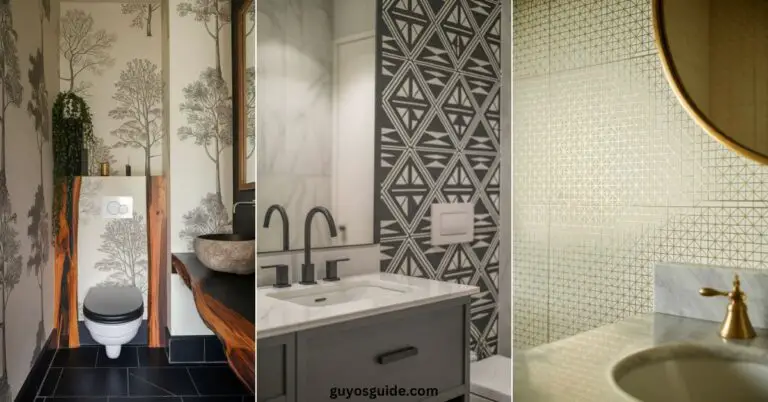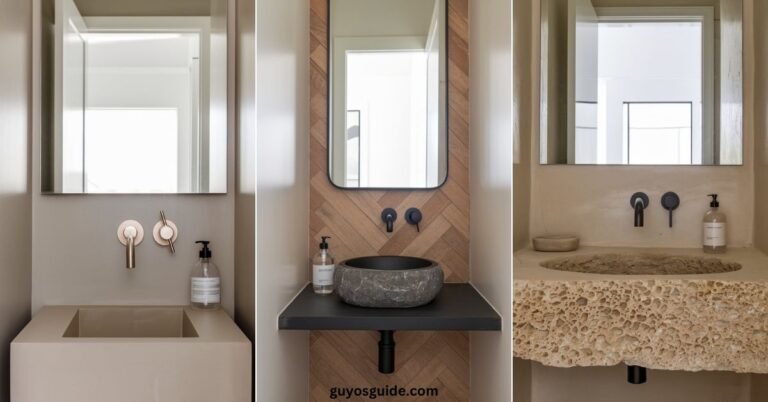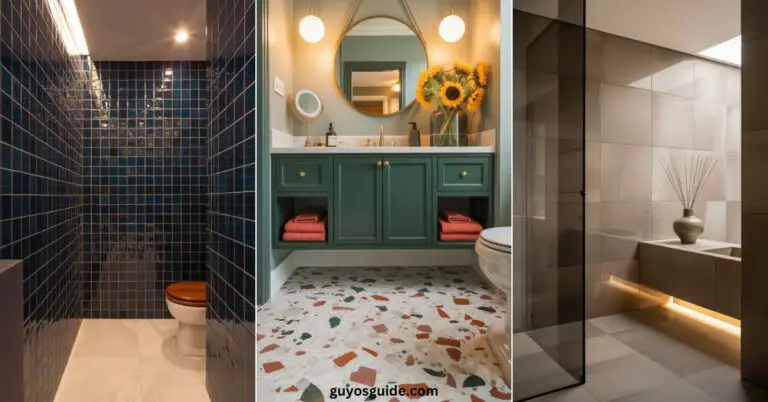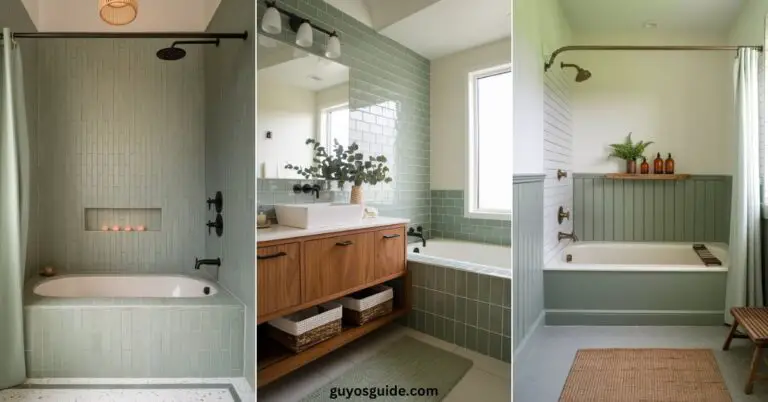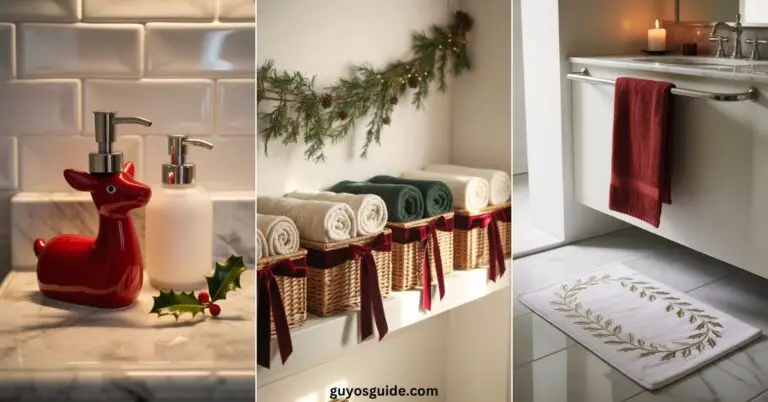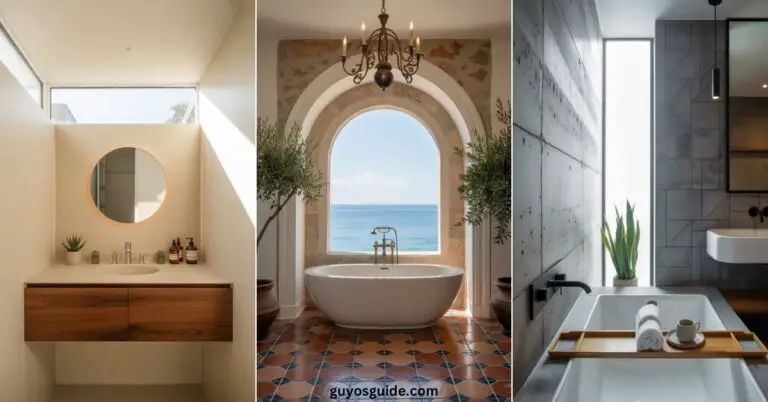25 Japandi Bathroom Ideas for a Perfect Spa-Like Feel
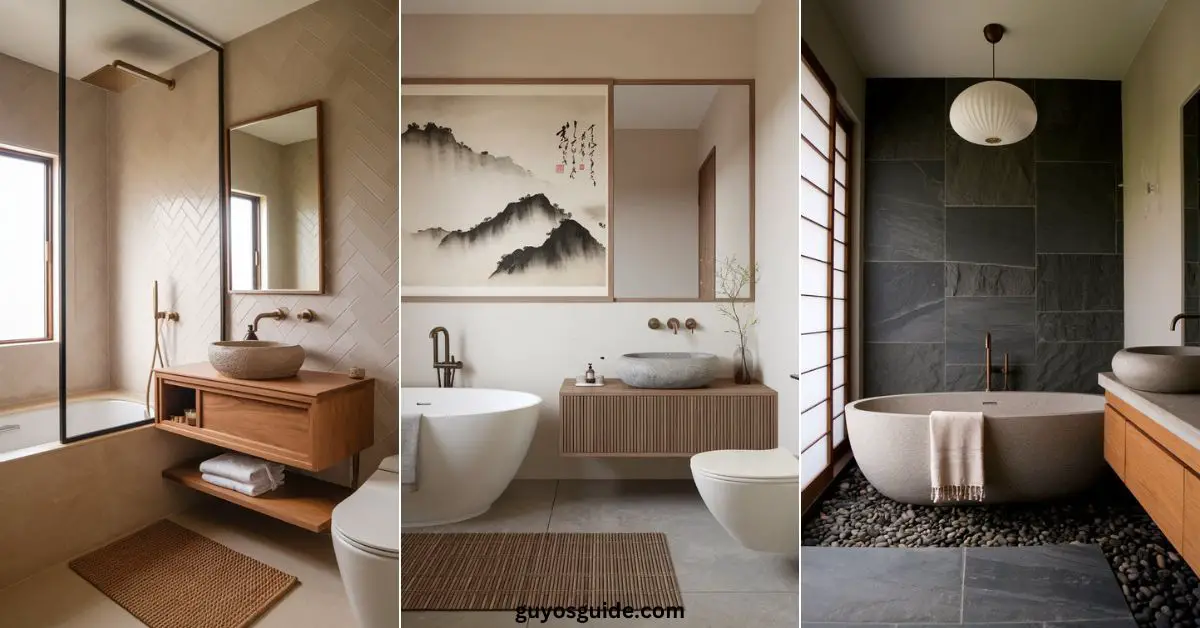
Want a bathroom that feels calm and stylish?
Try Japandi design!
It’s a mix of Japanese and Scandinavian styles, creating a simple and relaxing space.
In this article, we’ll share beautiful and easy ideas to bring Japandi style to your bathroom.
Let’s get started!
1. Embrace a Neutral Color Palette
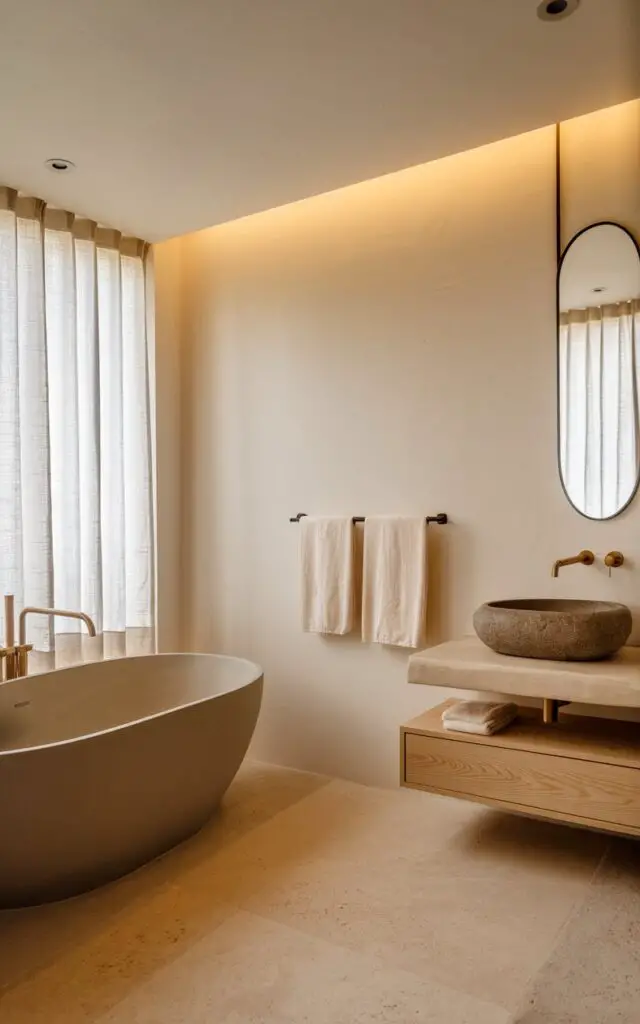
Japandi bathrooms are all about serenity, and nothing sets the mood better than a soft, neutral palette.
Think warm whites, earthy beiges, and gentle grays—colors that whisper, not shout.
This minimalist approach keeps the space feeling light, airy, and effortlessly calming.
Plus, neutrals never go out of style!
2. Bring in Natural Wood Accents
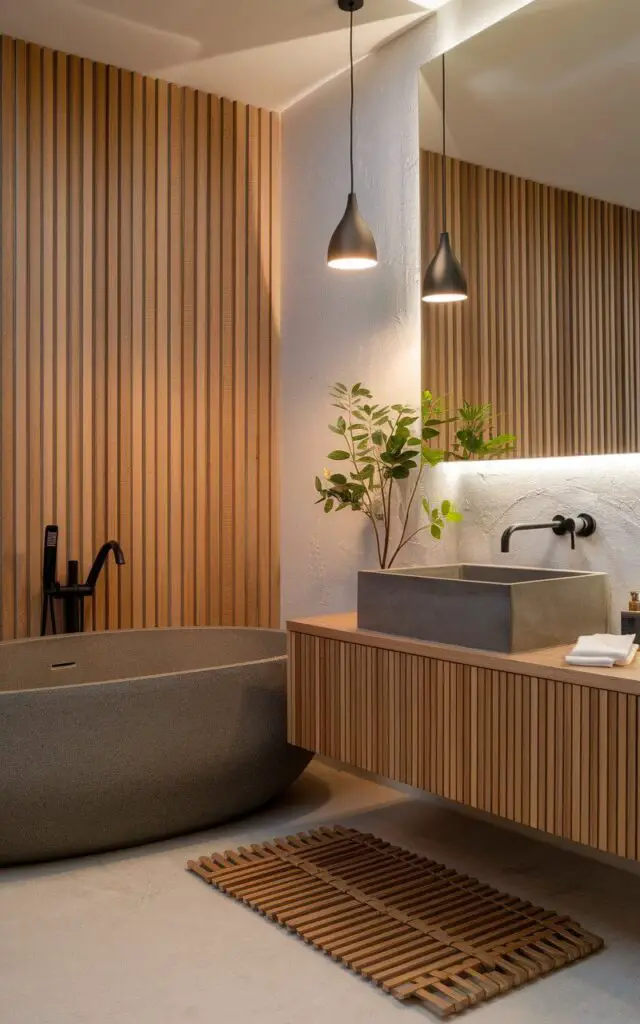
Wood is the heart and soul of Japandi design.
A floating oak vanity, bamboo shelving, or even a simple teak bath tray instantly warms up the space.
The trick? Keep the finish natural—nothing too glossy.
Let the organic grain and texture shine, grounding the space with a cozy, earthy charm.
3. Add a Deep Soaking Tub
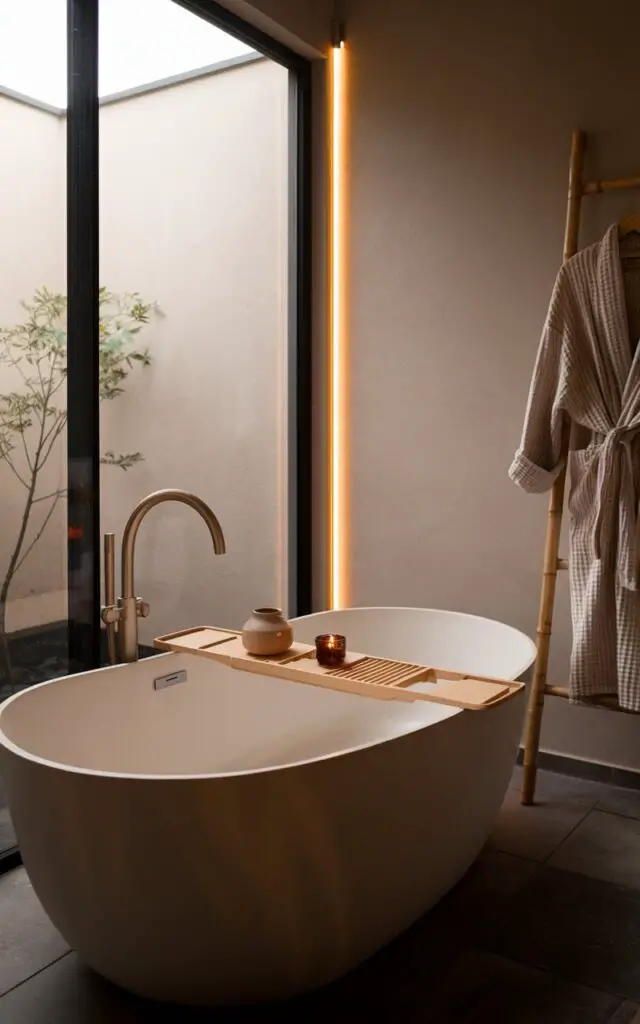
Imagine ending your day in a deep, freestanding soaking tub—pure bliss!
Inspired by Japanese onsens, these tubs are designed for relaxation.
Opt for a matte white or stone finish, and if you have the space, position it near a window.
A good soak can transform your bathroom into a sanctuary.
4. Play With Stone and Concrete Textures
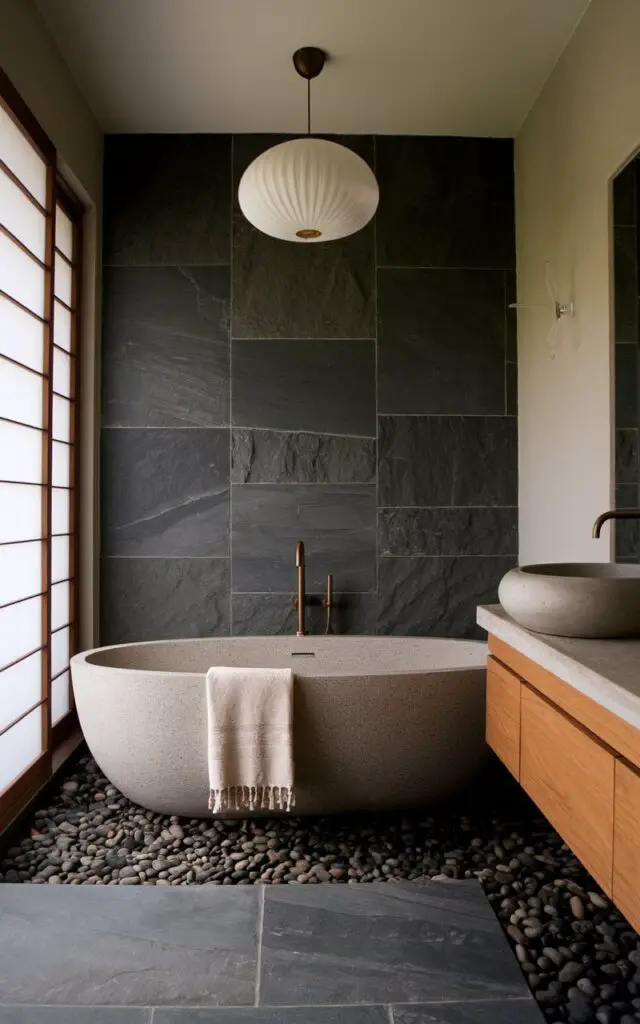
Japandi thrives on texture, and stone or concrete surfaces add the perfect tactile contrast.
A concrete sink, slate tiles, or a stone countertop brings that raw, organic feel.
The key is balance—pair these cool, structured elements with warm wood tones and soft textiles to keep the space inviting.
5. Keep It Clutter-Free and Serene
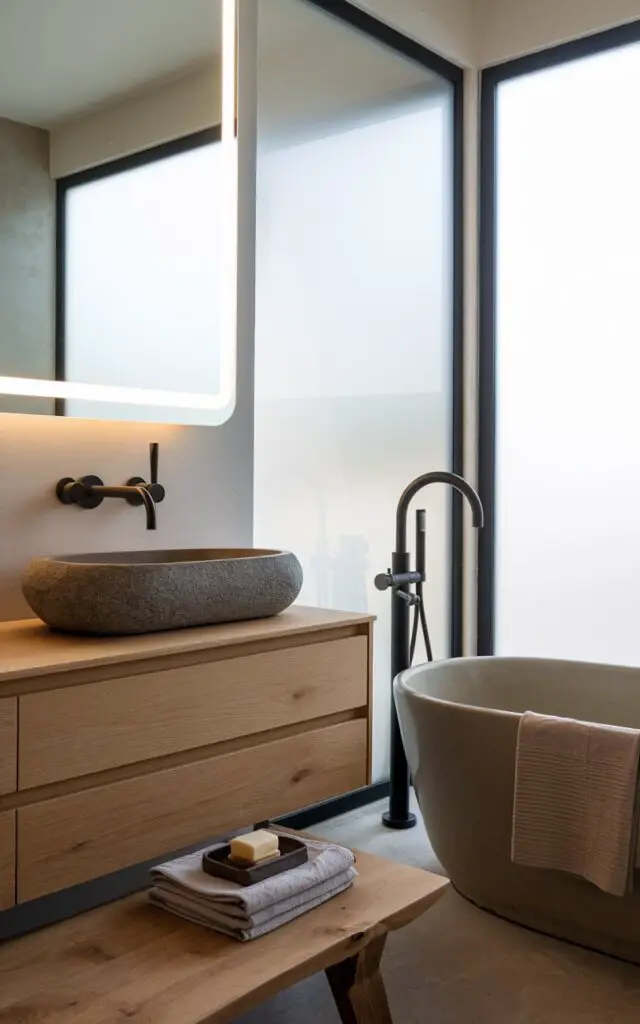
Minimalism isn’t just about looks—it’s a lifestyle.
Japandi bathrooms embrace “less is more,” so stash away unnecessary bottles and stick to the essentials.
Use hidden storage, floating shelves, or sleek cabinets to keep things tidy.
A clutter-free space isn’t just beautiful—it’s a breath of fresh air.
6. Install a Rainfall Showerhead

Nothing says “Zen” like a rainfall shower.
It mimics the gentle flow of nature, making every shower feel like a spa retreat.
Go for a matte black or brushed brass fixture for a modern touch.
Paired with a frameless glass enclosure, it keeps the bathroom looking open, airy, and luxurious.
7. Use Shoji-Inspired Sliding Doors
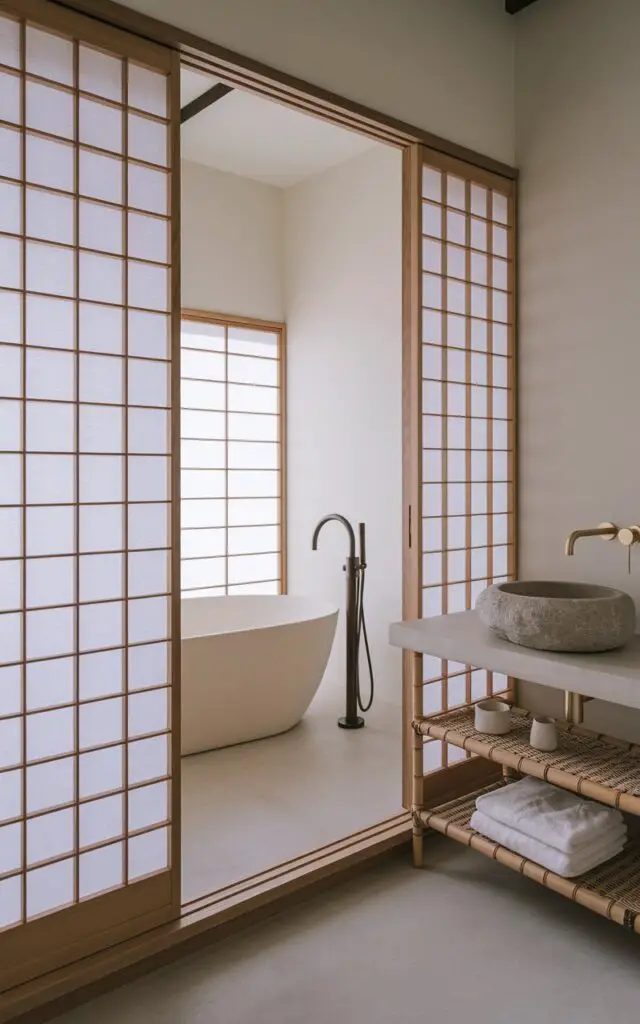
Traditional bathroom doors? Too bulky.
A Shoji-style sliding door is the perfect Japandi solution.
Made with wooden frames and translucent paper or glass panels, it softly filters light while maintaining privacy.
Plus, it saves space!
This design element adds a subtle Japanese touch without overwhelming the minimalist aesthetic.
8. Opt for Matte Black Fixtures
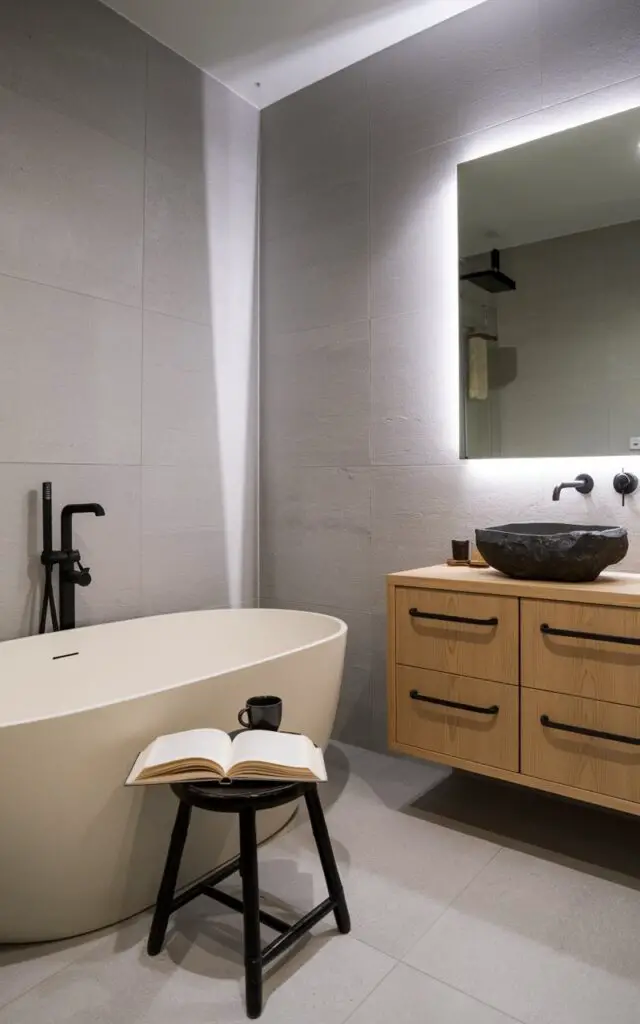
Japandi is all about contrast, and matte black fixtures are the perfect finishing touch.
From faucets to towel bars, their sleek, understated look balances the warmth of wood and stone.
They stand out without being overpowering—just the right amount of boldness in an otherwise soft, tranquil space.
9. Layer Soft, Earthy Textiles

Balance Japandi’s structured elements with soft linen towels, a waffle-textured robe, or a woven bath mat.
Stick to muted, earthy tones—off-white, taupe, or soft gray—to maintain the calm aesthetic.
These small, cozy additions make your bathroom feel warm and inviting, just like a luxury spa retreat.
10. Choose a Statement Vessel Sink
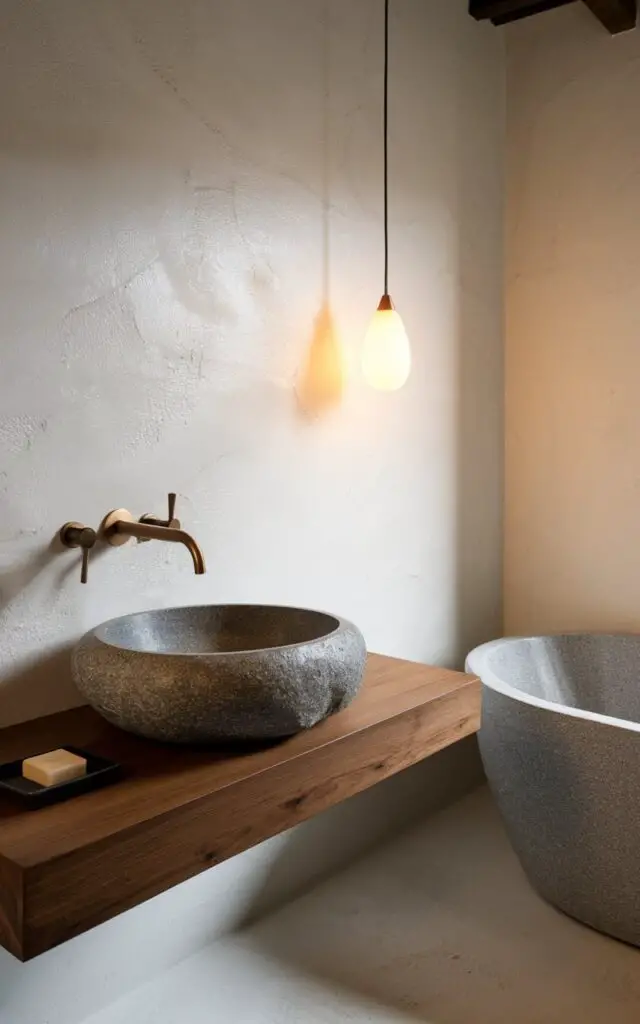
A sculptural vessel sink isn’t just functional—it’s a design statement.
Opt for ceramic, stone, or concrete in organic, asymmetrical shapes.
These natural materials add texture and visual interest, making your vanity area feel more curated.
It’s a simple way to elevate your bathroom’s Japandi vibe effortlessly.
11. Maximize Natural Light
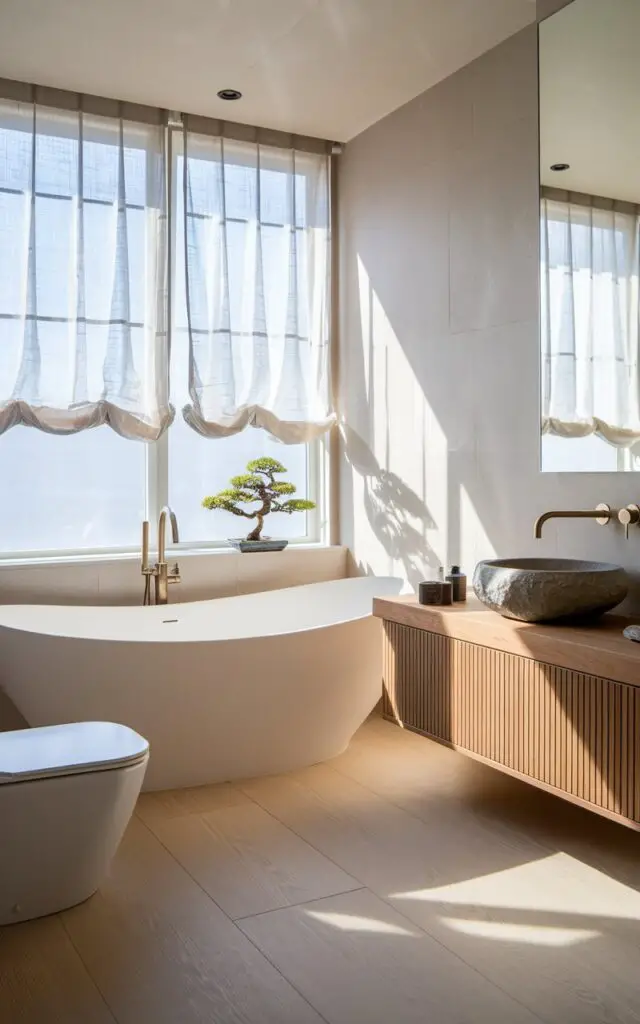
A bright, sunlit bathroom instantly feels more peaceful.
If privacy allows, opt for large windows, skylights, or sheer curtains to let in natural light.
A well-placed mirror can also help reflect sunlight, making the space feel even more open and airy.
Light-filled bathrooms = instant serenity.
12. Add Zen-Inspired Greenery
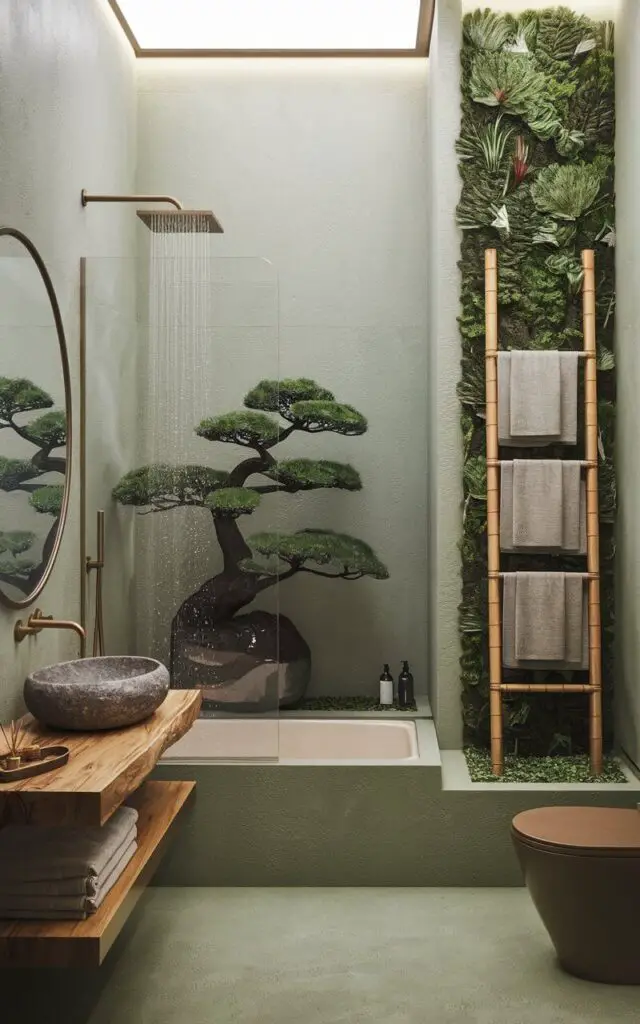
A little greenery goes a long way!
A small bonsai, bamboo stalk, or hanging pothos plant brings life into the space.
Japandi interiors celebrate nature, and a touch of greenery adds freshness without overwhelming the minimalist aesthetic.
Bonus: plants thrive in bathroom humidity, so they’ll love their new home.
13. Install Minimalist Floating Shelves
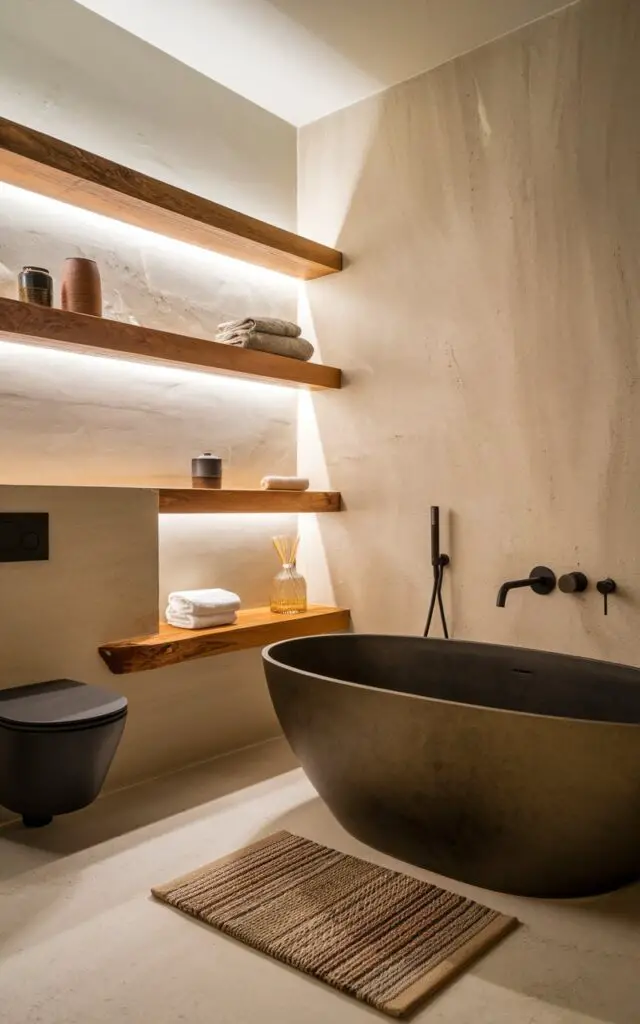
Floating wooden shelves are both stylish and functional.
Use them to display neatly folded towels, handcrafted ceramics, or a small plant.
The key? Keep it minimal—Japandi style is all about intentionality.
A few thoughtfully placed items add warmth without making the space feel cluttered.
14. Set the Mood With Soft Lighting
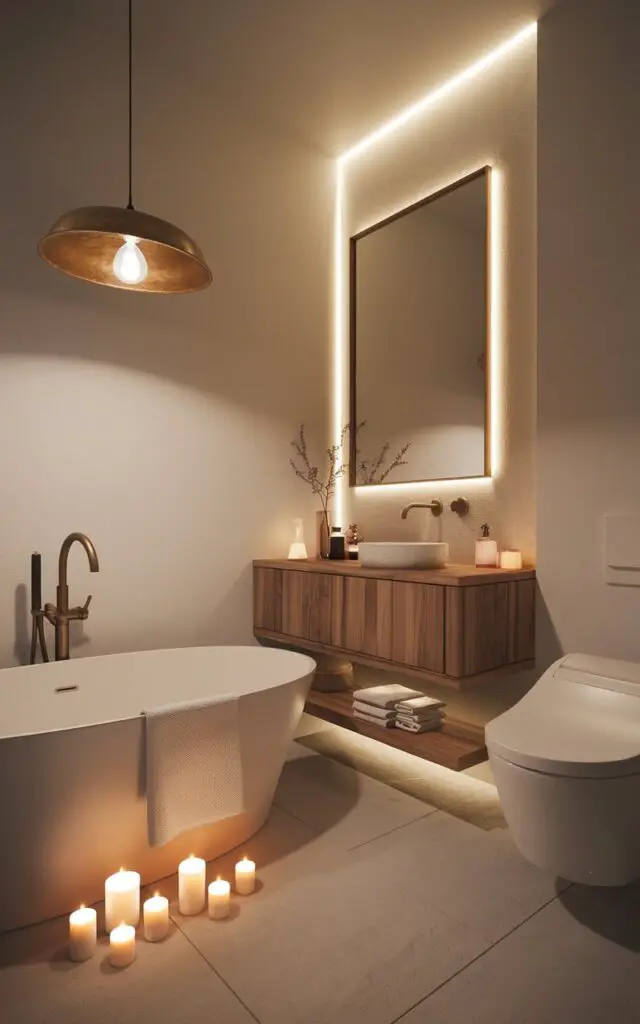
Harsh overhead lights? No thanks.
Soft, warm lighting is essential for a cozy, Japandi-inspired bathroom.
Consider wall sconces, paper pendant lights, or even recessed lighting with dimmers.
The goal is to create a soothing ambiance that makes every bath or shower feel like a calming ritual.
15. Incorporate a Wooden Bath Tray
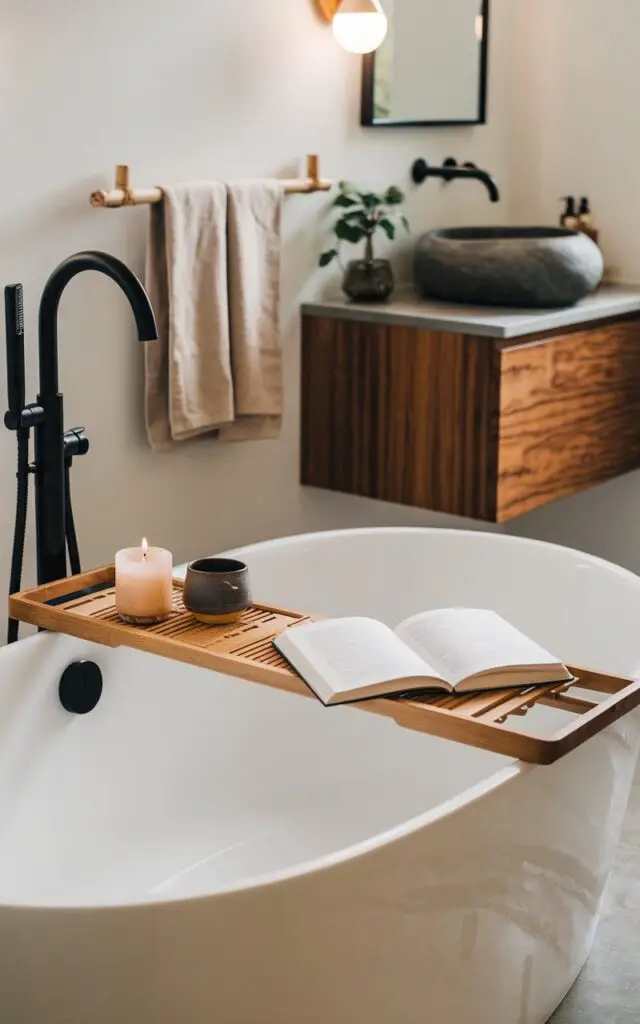
A wooden bath tray is both beautiful and practical.
Made from bamboo or teak, it’s perfect for holding a book, a cup of tea, or even a small candle during a relaxing soak.
This simple addition turns your bathtub into a luxurious spa moment—because self-care should feel effortless.
16. Add Subtle Geometric Tiles
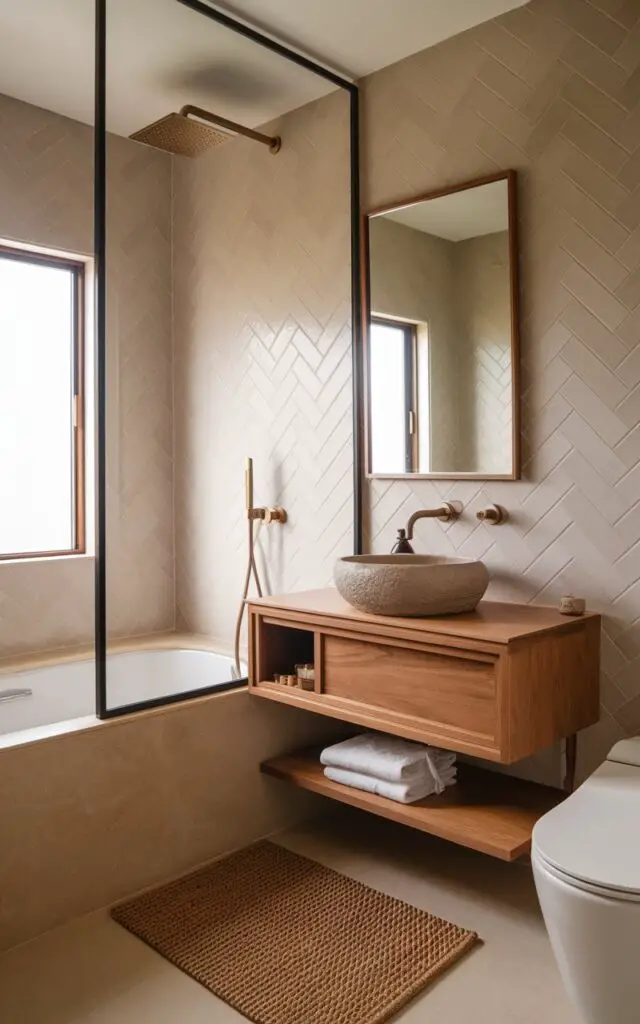
Japandi design isn’t about flashy patterns, but a subtle geometric tile can add depth without overwhelming the space.
Think herringbone, soft hexagons, or simple linework in muted tones.
It’s the perfect way to introduce visual interest while keeping the bathroom feeling clean, sophisticated, and effortlessly chic.
17. Choose a Floating Vanity for an Airy Look
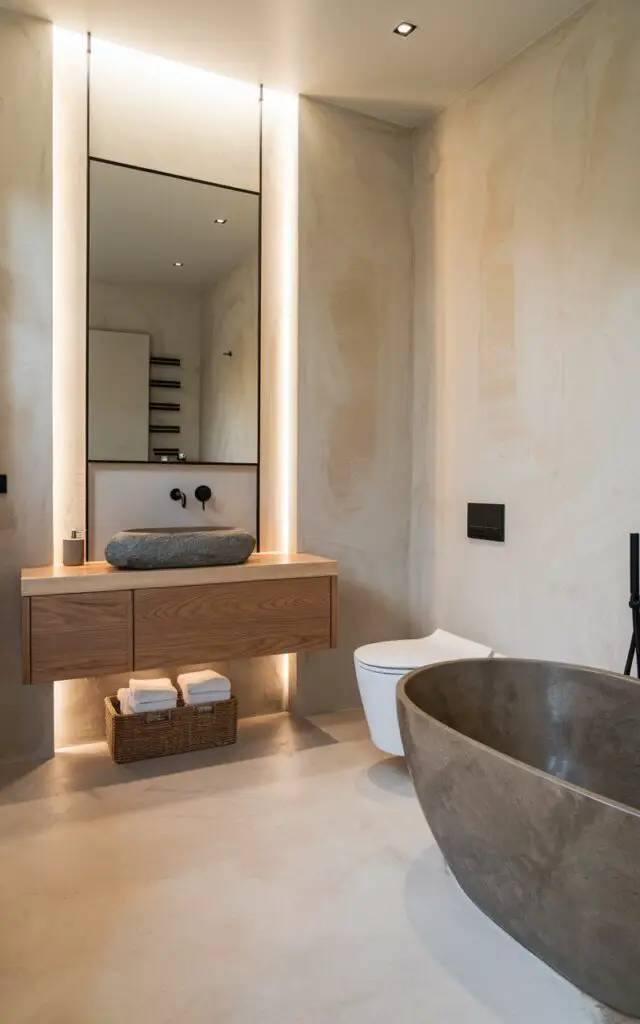
A floating vanity keeps things light, modern, and oh-so Japandi.
It creates the illusion of more space, making even small bathrooms feel open.
Opt for woodgrain finishes with simple, sleek hardware.
Bonus: It’s easier to clean underneath, keeping your bathroom as tidy and stress-free as possible.
18. Decorate With Handmade Ceramics

Handcrafted ceramics bring warmth and authenticity to a Japandi bathroom.
A hand-thrown soap dish, an irregularly shaped toothbrush holder, or a textured vase instantly elevates the space.
These small, imperfectly perfect details embrace wabi-sabi philosophy—finding beauty in simplicity and imperfection.
19. Use Rounded Mirrors for a Softer Look
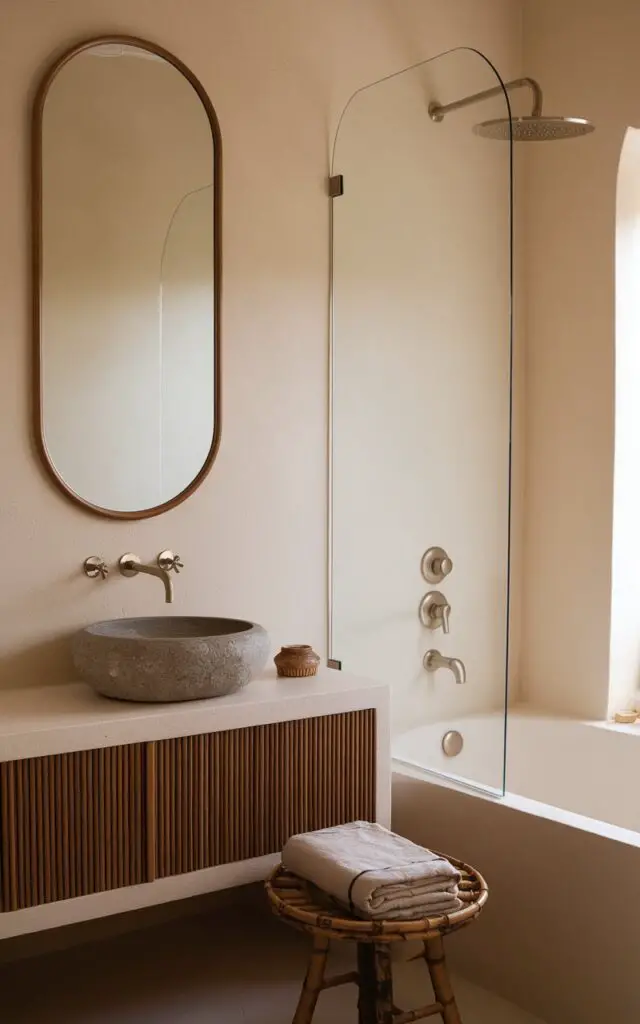
Hard angles can feel harsh in a serene space, so opt for a rounded mirror instead.
An oval or circular mirror softens the overall aesthetic, making your bathroom feel more inviting.
A wooden or matte black frame adds just the right touch of contrast while keeping things balanced.
20. Go for a Monochrome Look
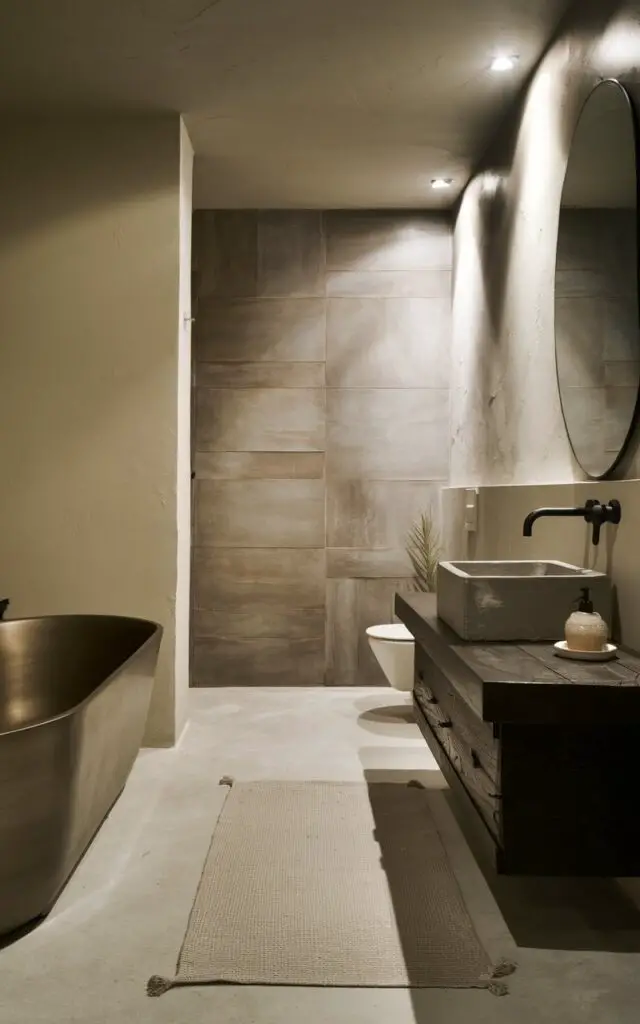
Keeping your bathroom in a single color palette creates a sophisticated, calming effect.
Try layering different shades of beige, gray, or soft white through tiles, textiles, and accessories.
The key?
Mixing textures—matte tiles, smooth ceramics, and plush towels—to add depth while staying within the same color family.
21. Introduce a Pebble Mat or Shower Floor
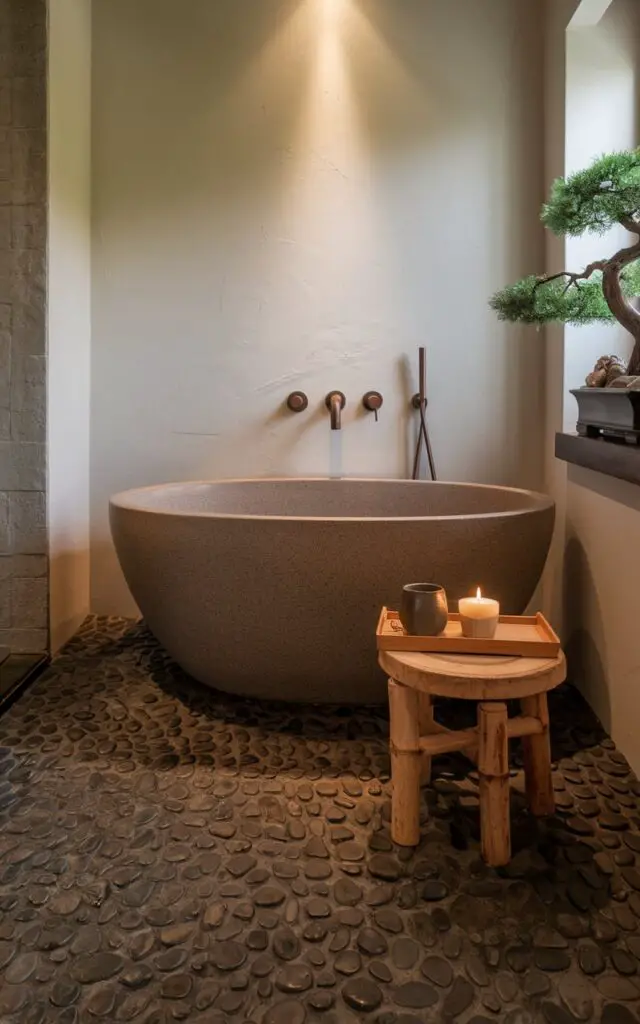
Bring the spa experience home with a pebble mat or a stone shower floor.
The natural texture feels amazing underfoot and adds an organic, earthy touch to the space.
It’s a subtle way to bring the outdoors in while enhancing your daily self-care routine.
22. Create Recessed Niches for Storage
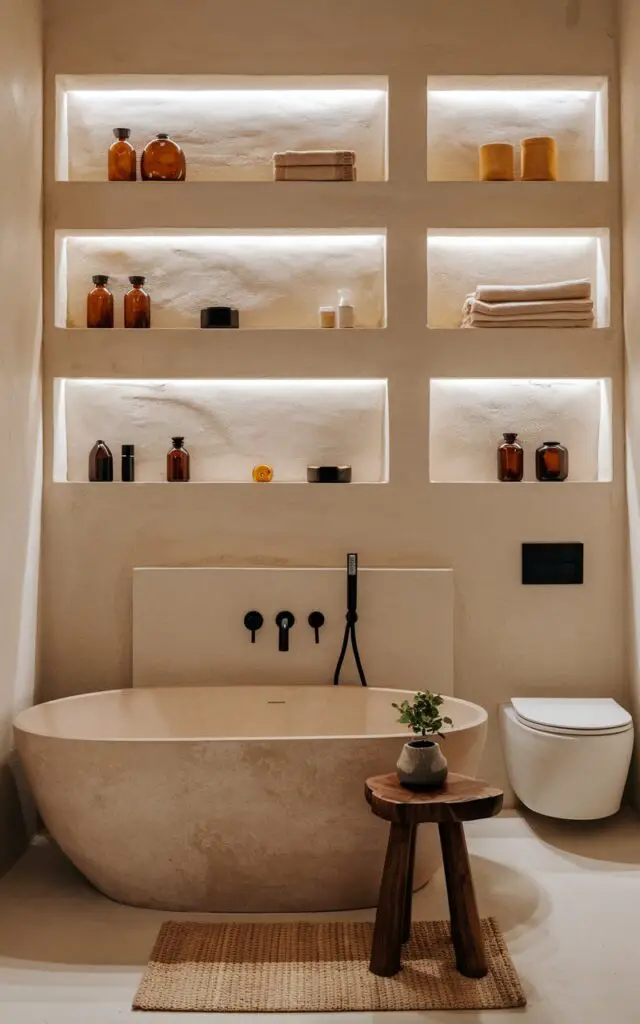
Bulky cabinets? Not Japandi.
Recessed niches in the shower or above the sink keep essentials tidy without taking up extra space.
Whether it’s for shampoo bottles or neatly folded towels, built-in storage blends seamlessly into the design, maintaining that clean, minimalist aesthetic.
23. Incorporate Japanese Artwork or Calligraphy
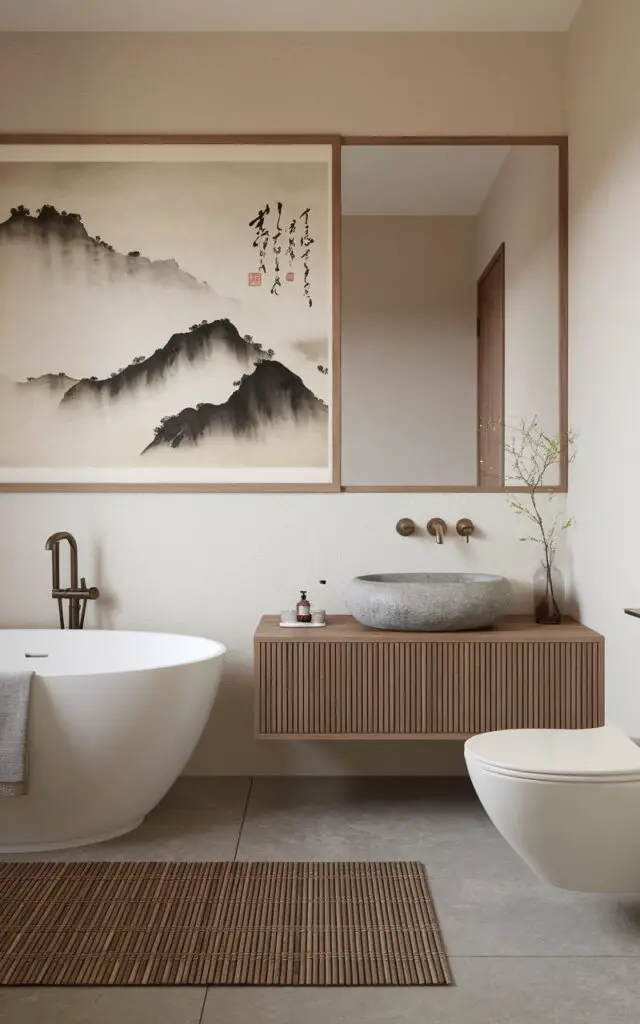
A single framed piece of Japanese calligraphy or a minimalist ink painting adds personality without clutter.
Choose artwork with nature-inspired themes—cherry blossoms, mountains, or flowing water—to enhance the tranquil vibe.
This subtle decor choice makes the bathroom feel intentional and connected to Japandi’s cultural roots.
24. Balance Light and Dark Elements
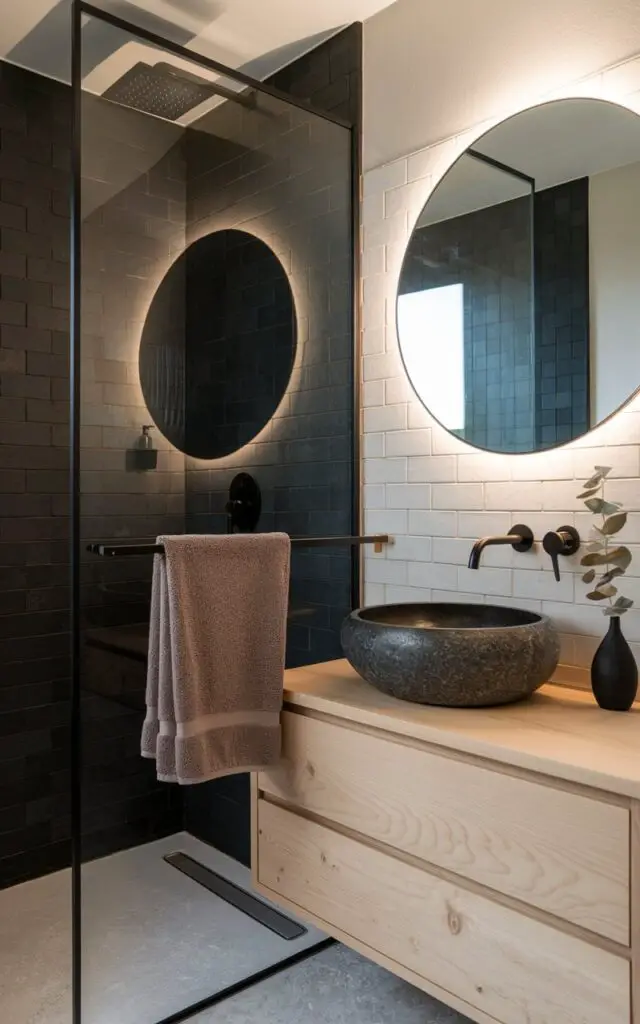
Japandi thrives on contrast, so play with light and dark tones.
A light oak vanity against dark stone tiles? Gorgeous.
A soft beige wall with a black-framed mirror? Perfect.
This balance keeps the space visually dynamic while still feeling calm and harmonious.
25. Infuse the Space With Natural Scents
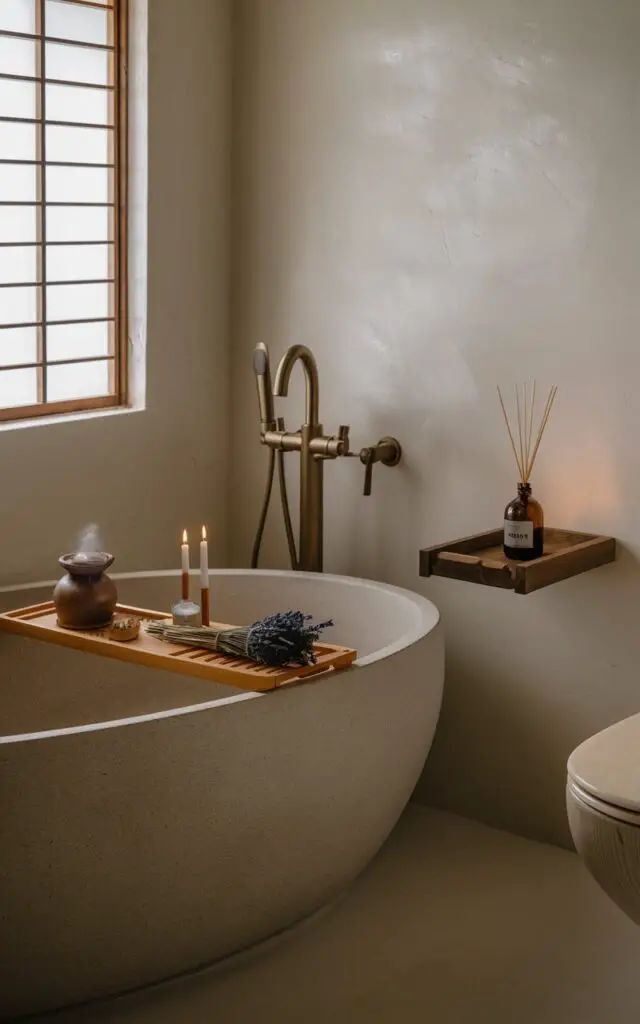
Japandi isn’t just about aesthetics—it’s about the experience.
Introduce calming scents like hinoki wood, lavender, or sandalwood with an essential oil diffuser, soy candles, or natural incense.
Scent has the power to transform your bathroom into a true retreat, making every moment feel like a ritual.
Wrap Up
Creating a Japandi bathroom is all about balance, simplicity, and warmth.
With natural materials, soft lighting, and clutter-free spaces, you can turn your bathroom into a peaceful retreat.
Try these ideas to bring calm and beauty into your home.
Start today and enjoy your own little spa sanctuary!


